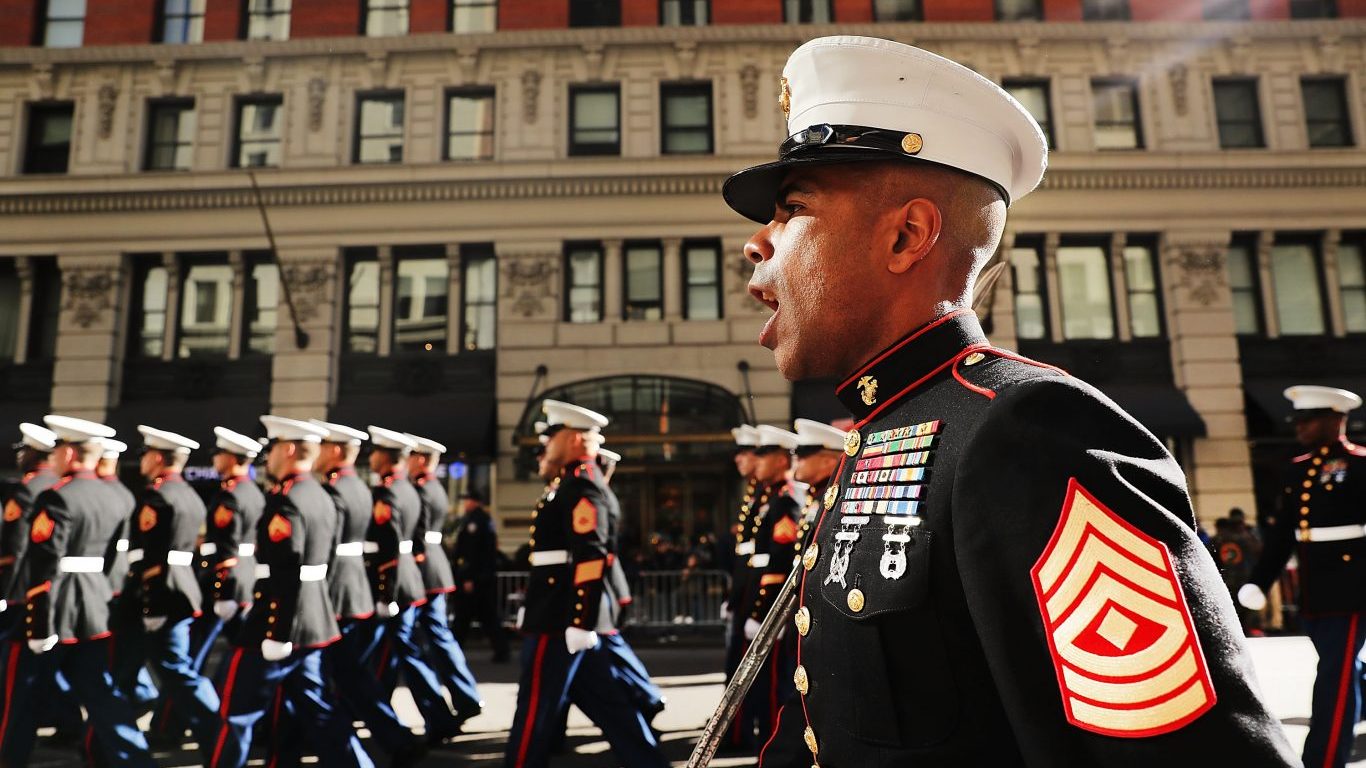
Nations have been holding ostentatious military parades since at least ancient Mesopotamia, when its victorious armies returned from battles fought to expand the empire. It’s safe to say that probably every nation that has fielded an army has held a military parade.
24/7 Tempo has compiled a list of the grandest military parades in history, reviewing sources such as history.com.
Artists in ancient Mesopotamia depicted warrior kings leading triumphant armies in friezes on buildings. Fast forward to the Roman Empire, where the victories of Roman legions were greeted with a parade that went from the Field of Mars — the god of war– to the Temple of Jupiter. Rome was the largest of the mega cities of the ancient world.
As countries coalesced into nation-states, military parades were used to project a nation’s power. Much of the rigorous military choreography — the crisp salutes, the precise spacing between soldiers, the goose-stepping soldiers — can be traced back to the 17th century and army officers from Prussia, a militaristic nation that is one of at least 23 countries that no longer exist.
Democracies hold military parades as well. France’s Bastille Day parade is one of the world’s oldest. The parade so impressed President Donald Trump that he considered holding a parade in the United States in appreciation of the military but decided against it citing costs. Apparently Trump feels the United States bears enough military costs because America spends more on the military than any other nation.
Americans tend to be somewhat ambivalent about military parades. This might be a reflection of our keeping the military at arm’s length and under civilian control. Americans have held military parades following victories in the Civil War and both world wars, the most expensive wars in U.S. history.
Click here to see the grandest military parades in history
24/7 Wall St. created a list of the grandest military parades in history by reviewing a variety of sources such as The Smithsonian Institution, CNN, Time, the Moscow Times, and Reuters. We included military troop estimates participating in these parades for the most recent iteration where possible. The year refers to the first time the parade was held, if it is a recurring event.

Roman military triumph (circa 223 B.C.)
> Troop count: Unknown
> Country: Rome
> City held: Rome
> Occasion: Defeat of Gauls
Roman military leader Marcus Claudius Marcellus led his army to Rome in triumph after defeating the Gauls. Marcellus became one of the most celebrated Roman commanders after defeating his opponent’s leader in one-on-one combat. In addition to the parade, he was honored for his victory with a play about his triumph.
[in-text-ad]
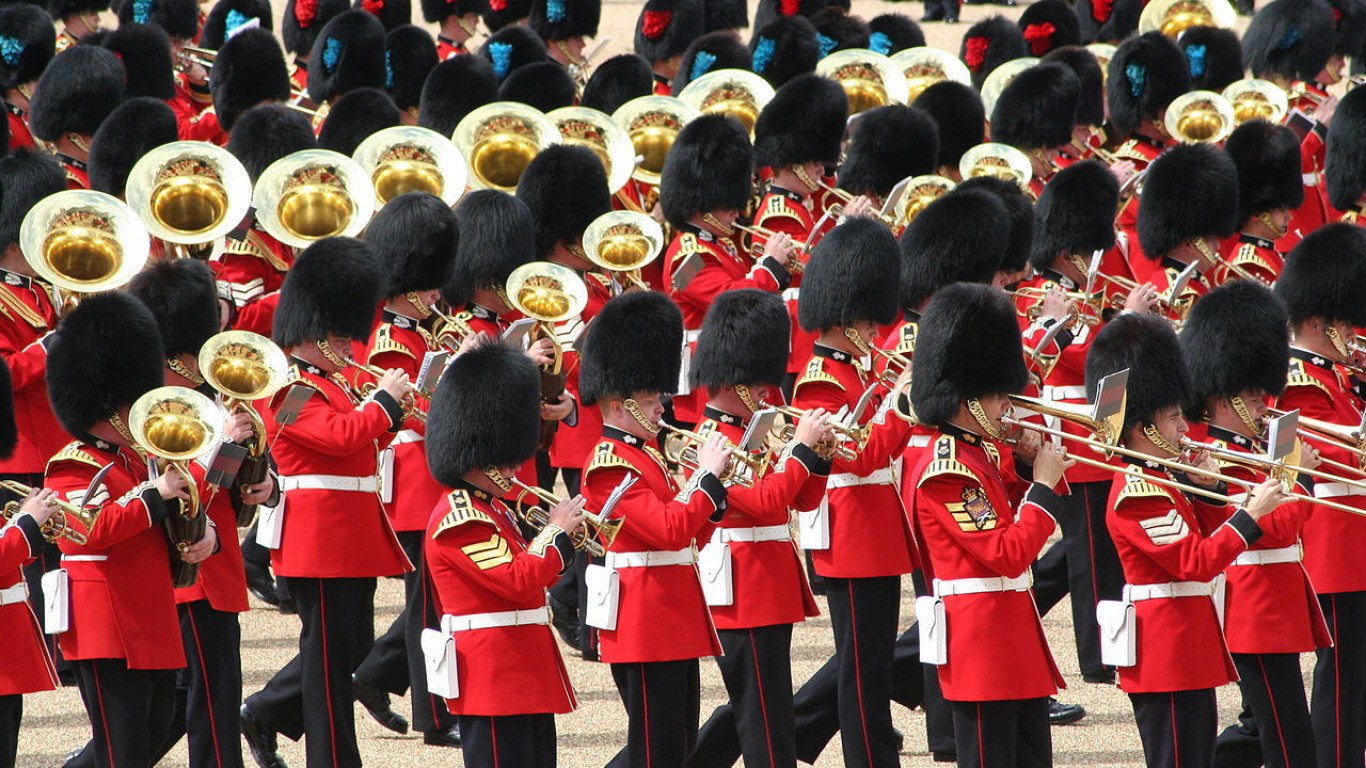
Trooping the Colour (1760)
> Troop count: 1,000+
> Country: United Kingdom
> City held: London
> Occasion: Queen’s birthday
Trooping the colour refers to the military practice of using the colors of a regiment to rally troops in battle. This British custom goes back to the 17th century during the reign of Charles II. In 1760, as part of marking the British sovereign’s birthday, Trooping of the Colour parade was ordered to take place annually. Today, the event is held on the queen’s official birthday, the second Saturday in June. The queen was actually born on April 21, but the June celebration increases the odds of good weather for the celebration.
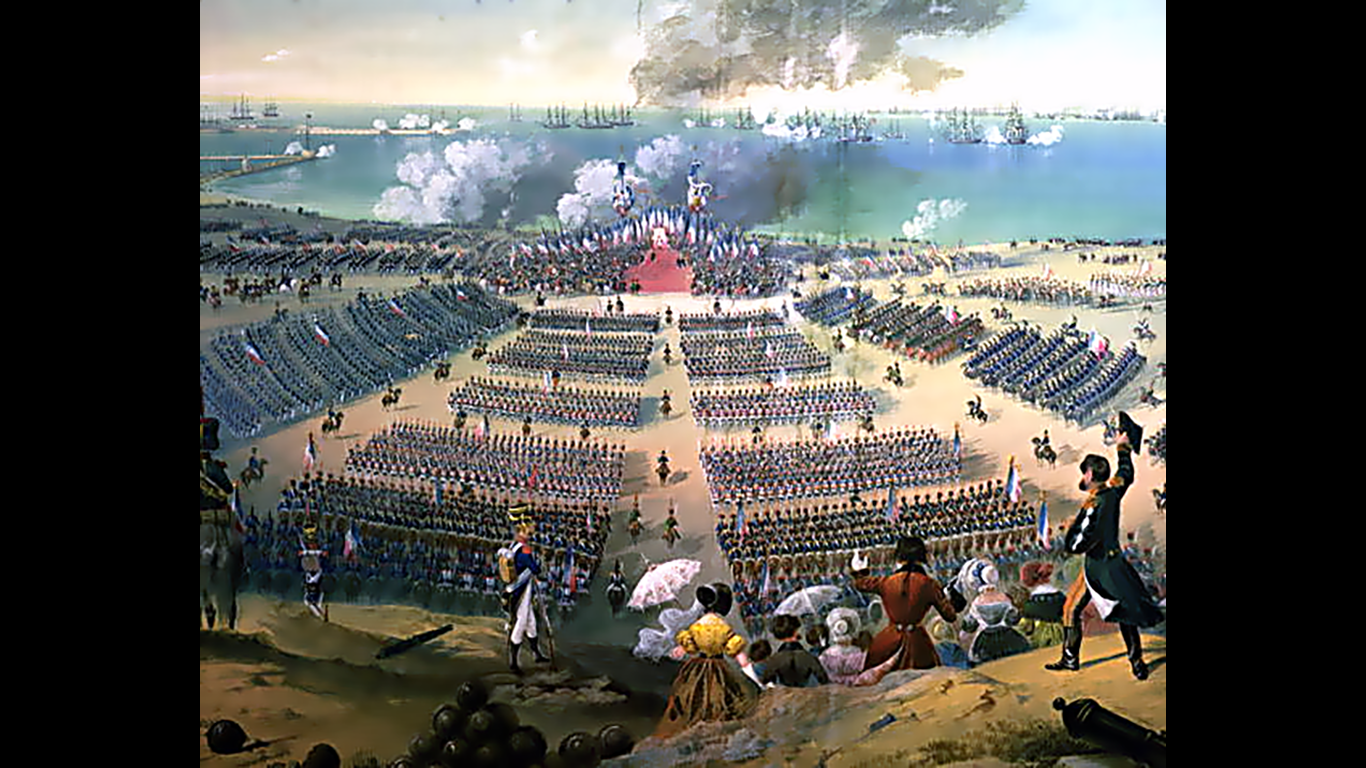
Boulogne-sur-Mer military parade (1804)
> Troop count: Possibly as many as 200,000
> Country: France
> City held: Boulogne-sur-Mer
> Occasion: Assemblage of grand army to invade England
At Boulogne-sur-Mer in France, Napoleon amassed an army he called L’Armée d’Angleterre (the Army of England) into an impressive military parade ahead of a possible invasion of Britain, which never happened.
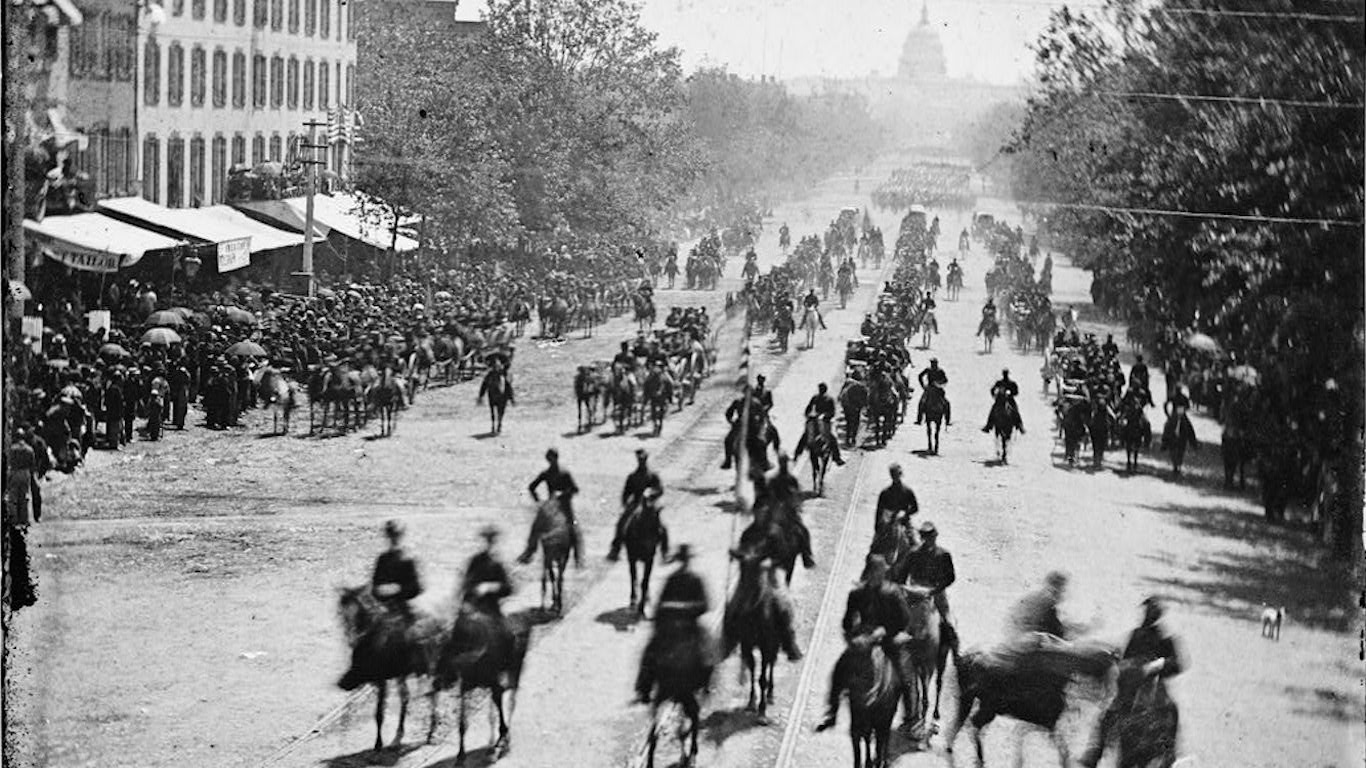
Grand Review of the Armies (1865)
> Troop count: 145,000
> Country: United States
> City held: Washington, D.C.
> Occasion: End of the Civil War
After the Confederacy surrendered to end the Civil War and President Abraham Lincoln was assassinated, President Andrew Johnson ordered a grand review of the Union armies to honor the American soldiers who won the Civil War and give the nation something to celebrate. Over two days, troops from the Army of the Potomac, Army of Georgia, and the Army of the Tennessee marched down Pennsylvania Avenue and were reviewed by generals Ulysses S. Grant, George G. Meade, and William T. Sherman.
[in-text-ad-2]
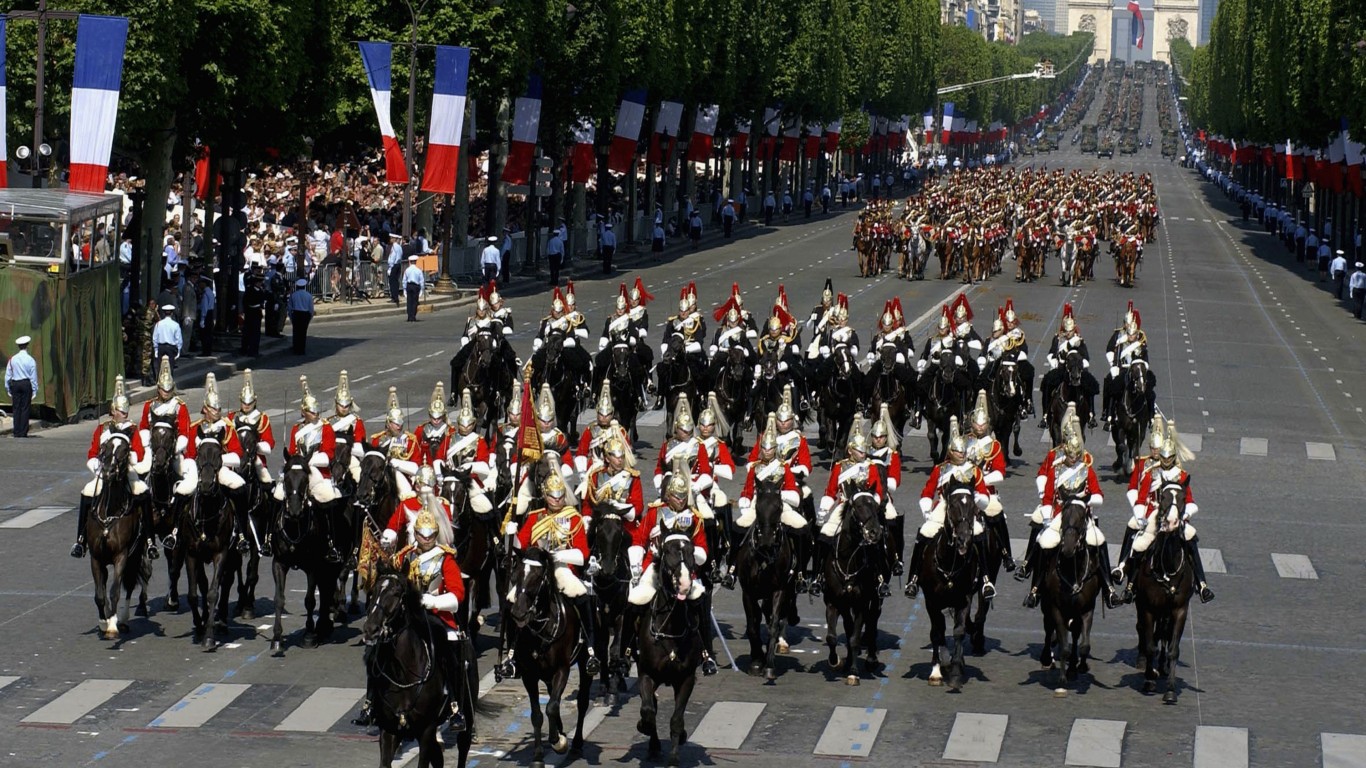
Bastille Day (1880)
> Troop count: 3,700
> Country: France
> City held: Paris
> Occasion: French Revolution
The French hold one of the world’s largest and oldest annual military parades on Bastille Day, July 14, as soldiers march down the Champs-Ãlysées. The parade has been staged annually since 1880, about 100 years after French revolutionaries stormed the Bastille â a military fortress and prison â an event that began the French Revolution.
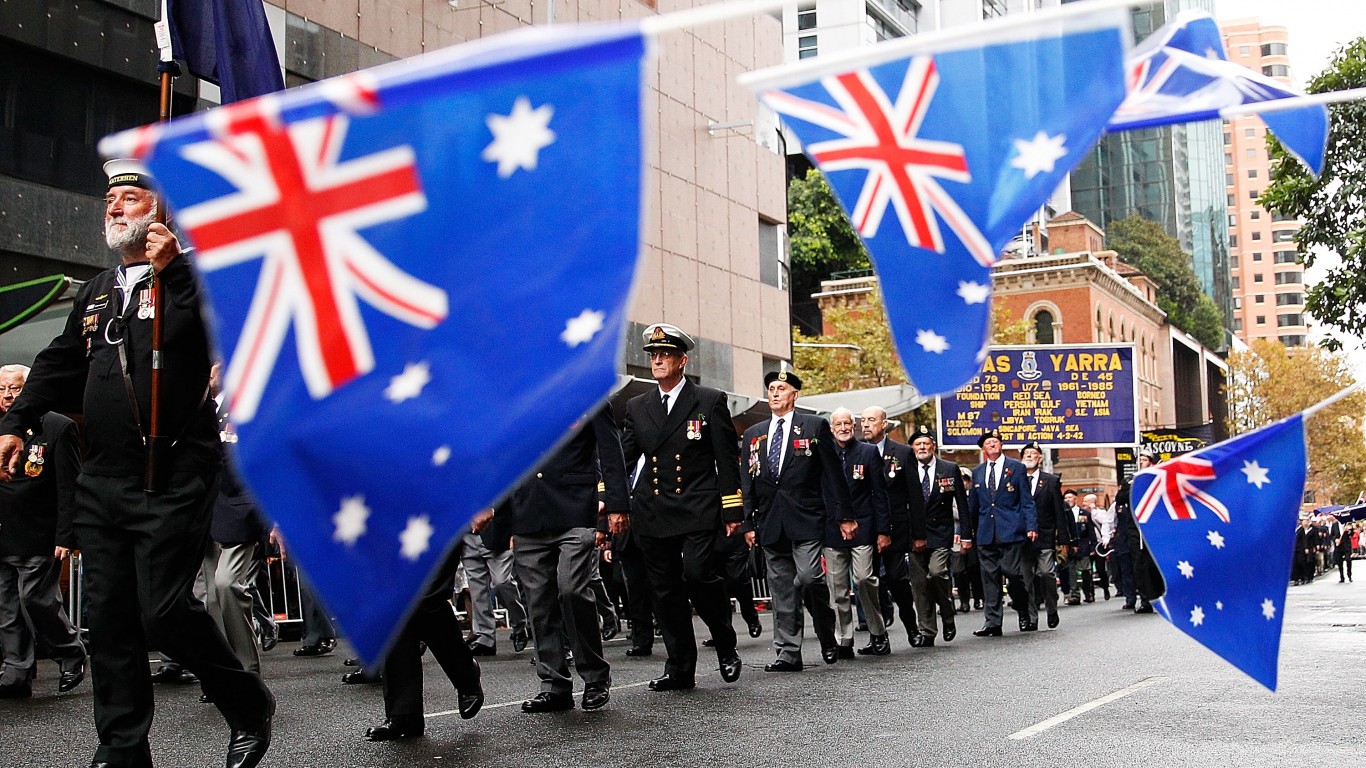
ANZAC Day (1916)
> Troop count: 6,000
> Country: Australia
> City held: Canberra, Adelaide, Sydney
> Occasion: World War I
ANZAC is shorthand for Australian and New Zealand Army Corps. ANZAC Day, held on April 25 each year, is a military parade that commemorates the Australians and New Zealanders who have fought and died in war.
[in-text-ad]
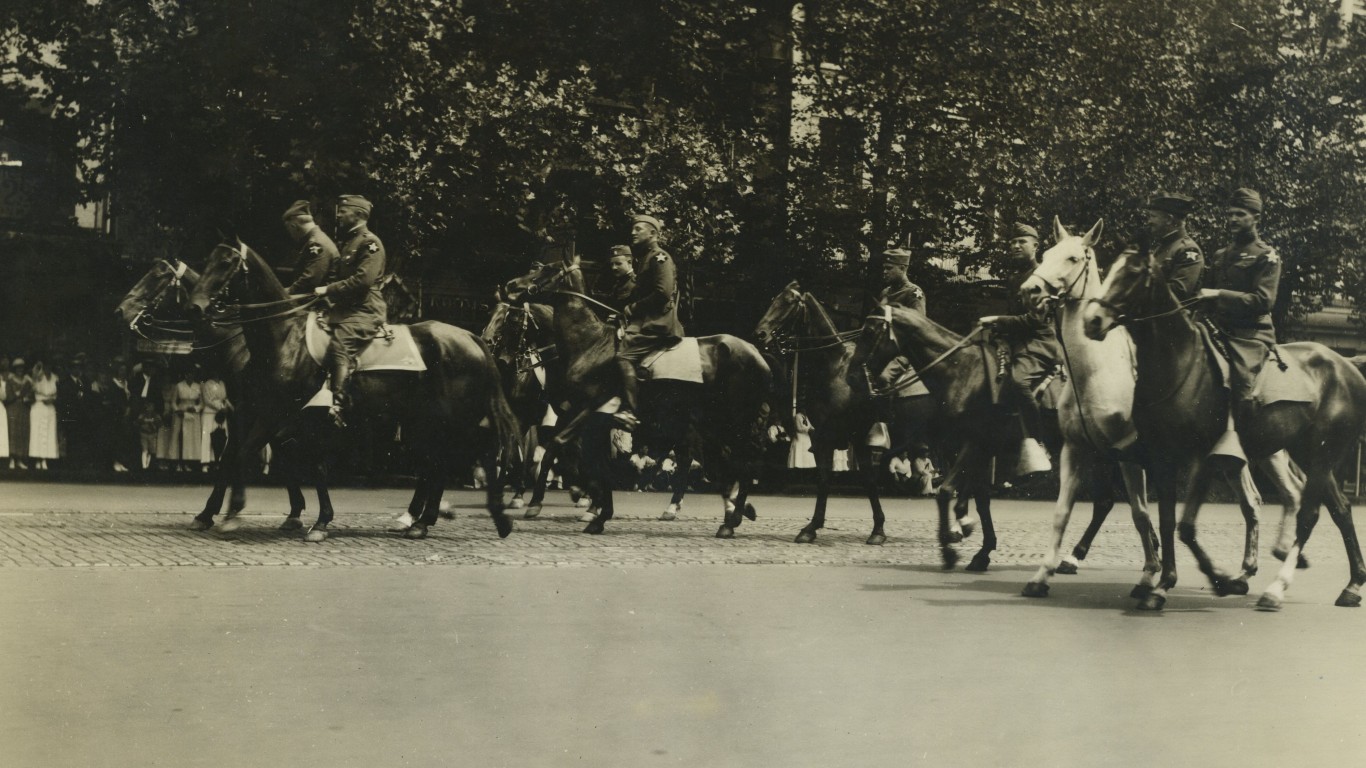
World War I Victory Parade (1919)
> Troop count: 25,000
> Country: United States
> City held: New York
> Occasion: World War I victory
A year after the Armistice was signed ending World War I, General John J. Pershing, commander of the American Expeditionary Force that fought in France during the war, led 25,000 troops in full battle dress down Fifth Avenue in New York City in September 1919. A week later, they repeated the parade in Washington, D.C.

PLA Day (1927)
> Troop count: 12,000
> Country: China
> City held: Beijing
> Occasion: People’s Liberation Army founding
On the 90th anniversary of the founding of the People’s Liberation Army, China staged in 2017 a large military parade that boasted 12,000 troops, 570 vehicles, and 129 jets.
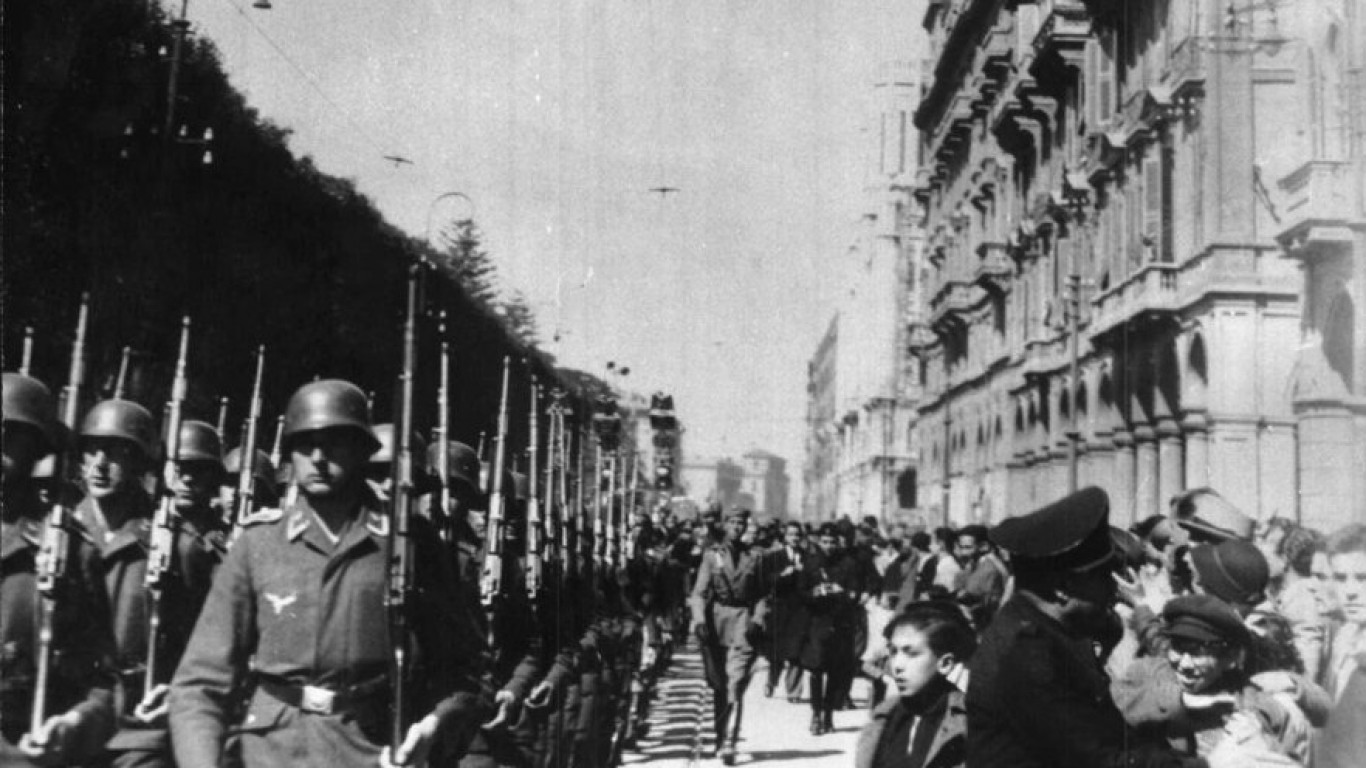
German military parade (1938)
> Troop count: Thousands
> Country: Germany
> City held: Nuremberg
> Occasion: Stormtroopers march through Nuremberg
Nazi Germany held many military parades before and during World War II. In September 1938, thousands of German troops marched through the streets of Nuremberg, the site of many massive Nazi rallies.
[in-text-ad-2]

Army Day Parade (1942)
> Troop count: 30,000
> Country: United States
> City held: New York
> Occasion: Entering World War II
On June 13, 1942, an estimated 500,000 civilians and public servants marched in solidarity with American service men and women in the Army Day parade that was viewed by an estimated 2 million people.
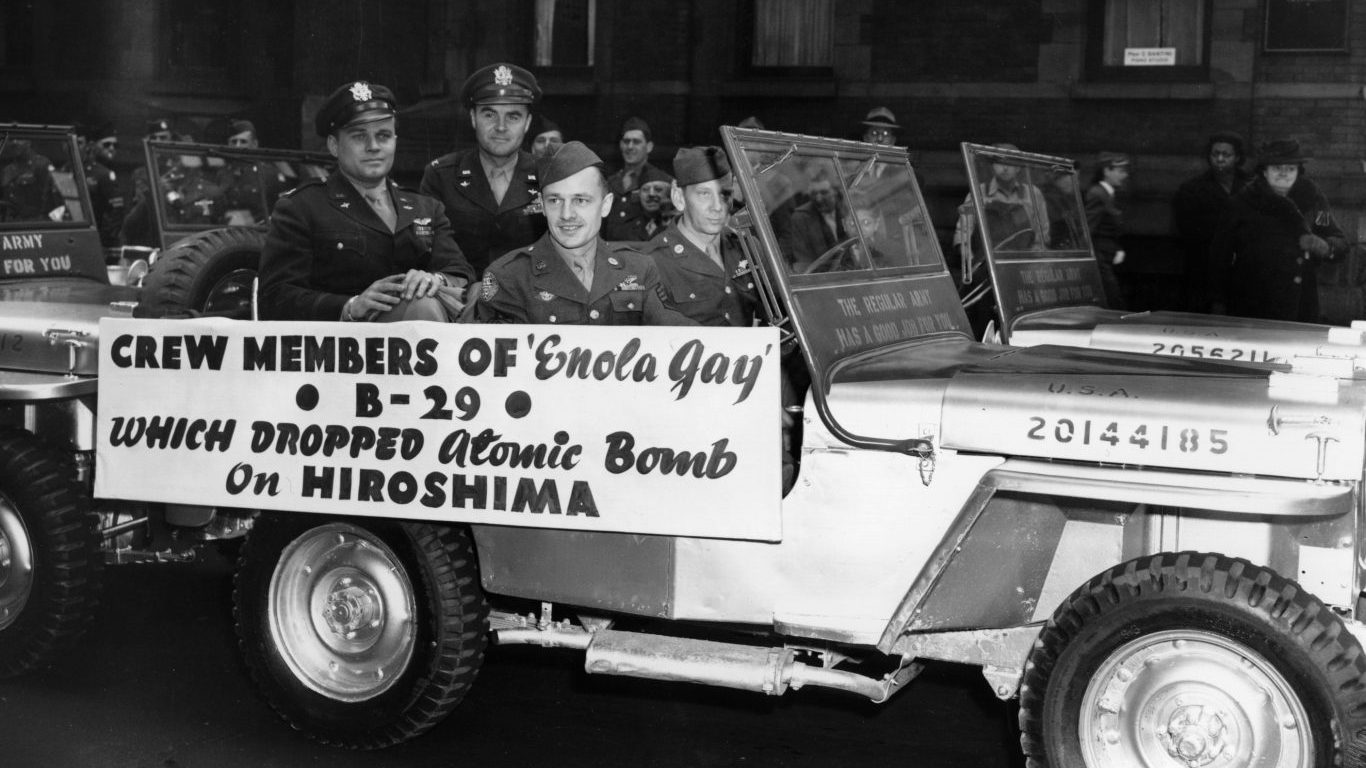
New York Victory Parade (1946)
> Troop count: 13,000
> Country: United States
> City held: New York
> Occasion: Victory in World War II
Four years after the Army Day Parade, New York City hosted the Victory Parade to celebrate the Allied triumph in World War II. The ticker-tape parade, a signature event in New York City, included 13,000 troops from the 82nd Airborne Division, tanks, howitzers, and armored cars. It was reportedly witnessed by 4 million people. The parade was believed to have extended for 4 miles and lasted 11 hours.
[in-text-ad]

Victory Day (1945)
> Troop count: 13,000
> Country: Russia
> City held: Moscow
> Occasion: World War II victory
The annual May Day parade is an important event in Russia, but no day is more significant than May 9, or Victory Day. That is the day Russia holds a massive military parade to commemorate its victory over Nazi Germany and the end of what Russia calls the Great Patriotic War.

National Day (1949)
> Troop count: 100,000
> Country: North Korea
> City held: Pyongyang
> Occasion: Kim dynasty
Military parades are a regular occurrence in North Korea. The totalitarian regime usually stages a massive military parade with goose-stepping soldiers, tanks, and missile on the anniversary of its founding, which is Sept. 9. North Korea also holds parades on the birthdays of its dynastic leaders.
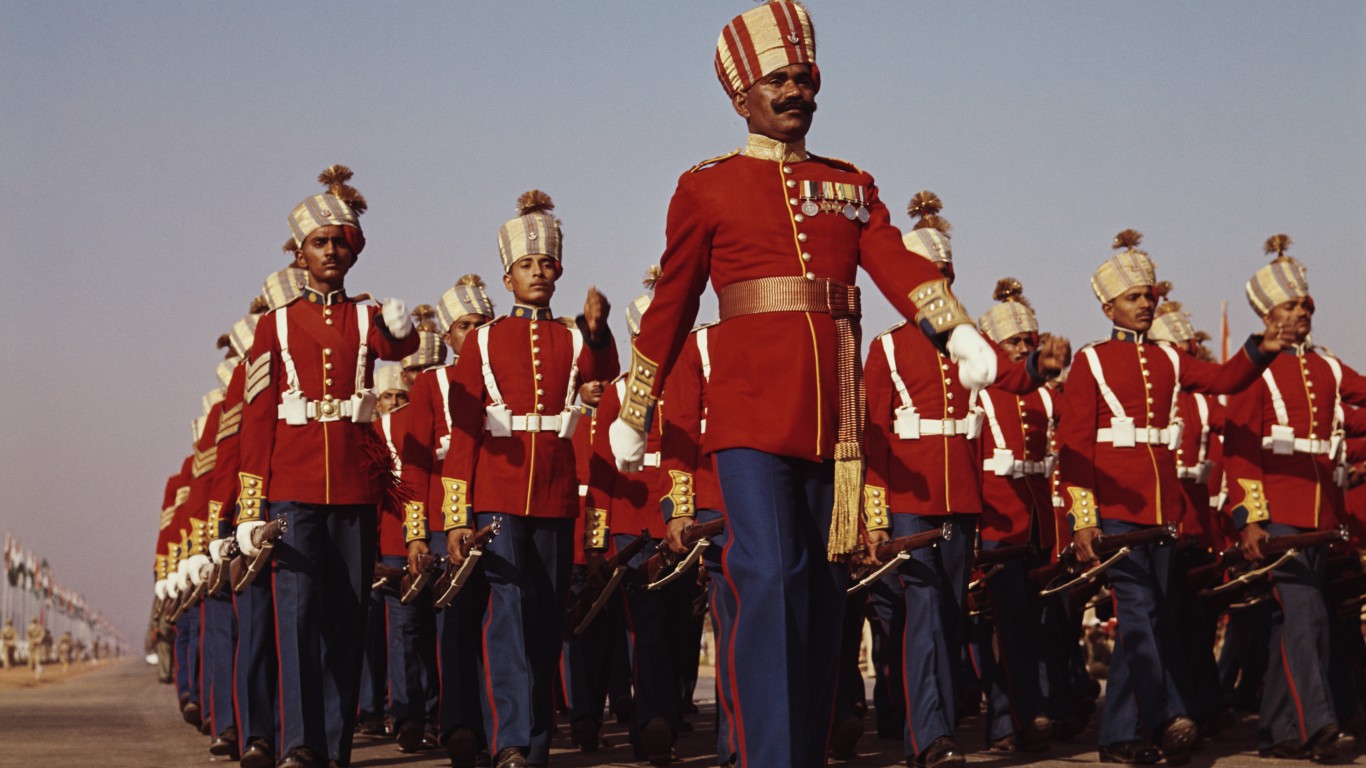
Republic Day (1950)
> Troop count: 1,000+
> Country: India
> City held: Rajpath
> Occasion: India’s constitution
India conducts a military parade on Republic Day each year on Jan. 26. The world’s largest democracy held its 70th Republic Day this past January, displaying artillery equipment bought from the United States. India’s military parades have usually been conducted as a show of force against neighboring Pakistan. The two nations are nuclear powers that have fought three conventional wars since India was partitioned in 1947.
[in-text-ad-2]

Armed Forces Day (1950)
> Troop count: Thousands of South Korean troops
> Country: South Korea
> City held: Seoul
> Occasion: Crossing the 38th parallel
Armed Forces Day is a South Korean celebration held every year on Oct. 1 to commemorate the anniversary of South Korean troops crossing the 38th parallel during the Korean War. Most years, it is a reminder that the nation needs to be vigilant in regard to its aggressive neighbor to the north. But last October, South Korea lightened up the event as the military celebrated the 70th Armed Forces Day with K-pop stars such as Psy.
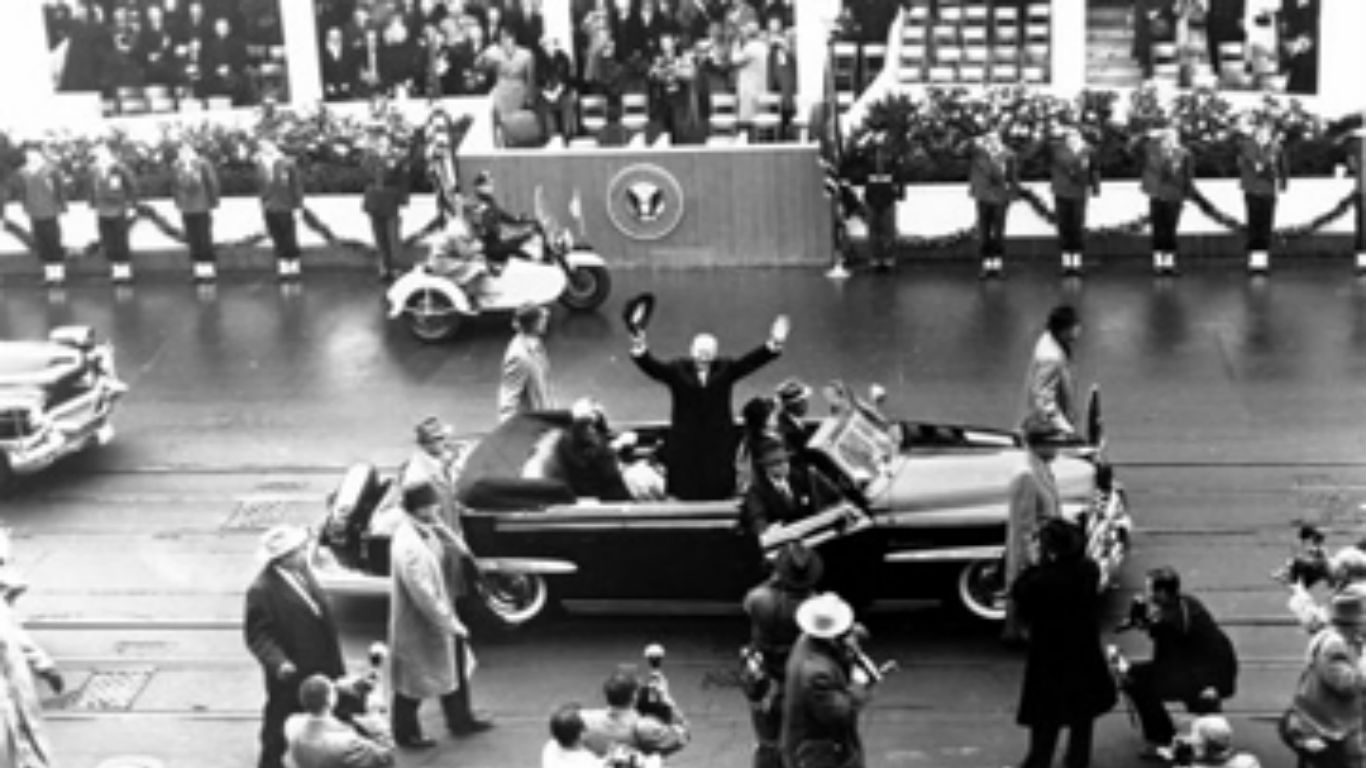
Dwight Eisenhower’s inaugural parade (1953)
> Troop count: 22,000
> Country: United States
> City held: Washington, D.C.
> Occasion: President Eisenhower’s election
Newly inaugurated president Dwight Eisenhower’s inaugural parade featured tanks and marching troops befitting the man who had led the crusade to help liberate Europe from fascism.
[in-text-ad]
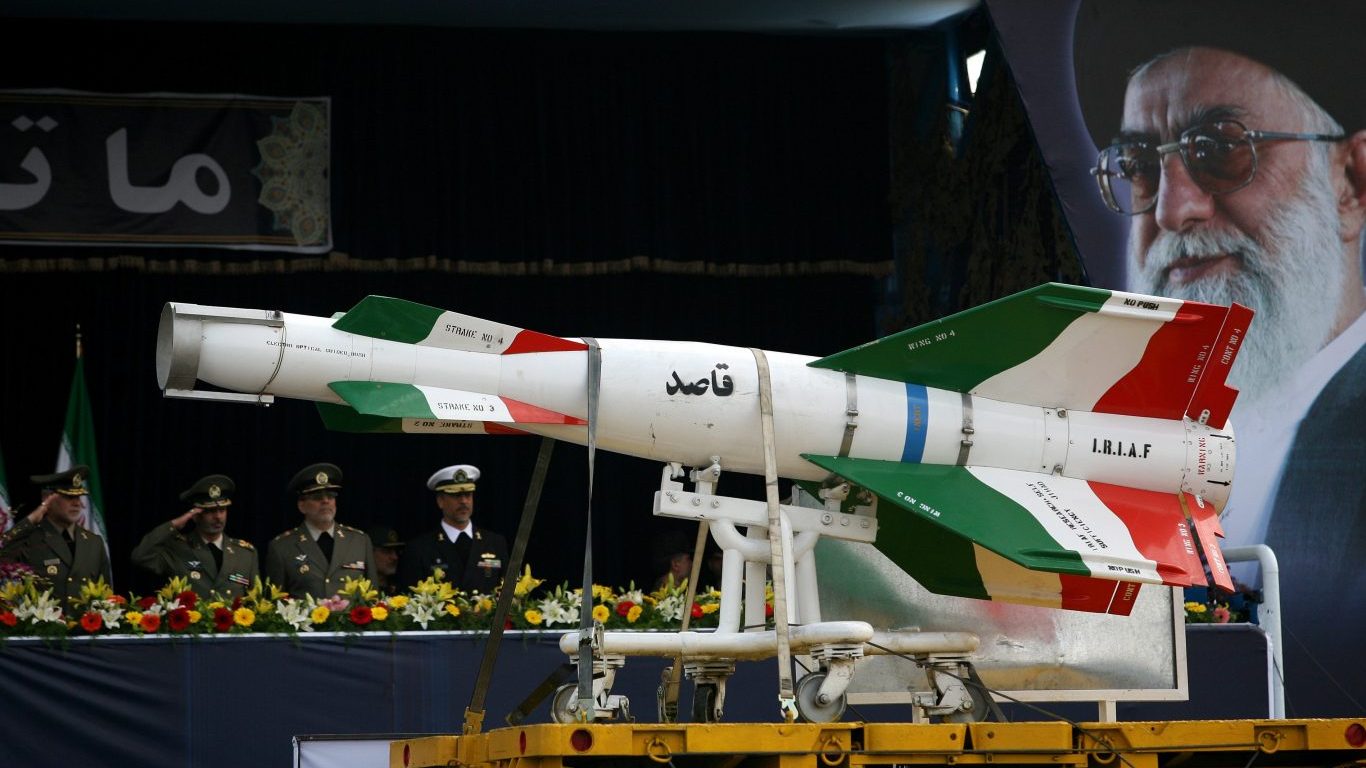
National Army Day (1979)
> Troop count: Unknown
> Country: Iran
> City held: Tehran
> Occasion: Military
Iran marks its annual National Army Day every April 18 with martial displays featuring all branches of the Islamic republic’s military. The occasion usually features anti-American messages. Iran’s leaders view the parade near the mausoleum of Ayatollah Khomeini, who founded the republic in 1979.

Independence Day (1991)
> Troop count: 4,500
> Country: Ukraine
> City held: Kiev
> Occasion: Independence
Ukraine celebrates its independence day on Aug. 24 in its capital of Kiev with a military parade that includes marching troops, tanks, and jet flyovers. Ukraine became independent when the Soviet Union dissolved in 1991.

Gulf War victory parade (1991)
> Troop count: 8,000
> Country: United States
> City held: New York City/Washington, D.C.
> Occasion: End of the Gulf War
The latest military parade held in Washington, D.C. was in June 1991 to welcome back American troops from the Gulf War. As part of a coalition of allied forces, U.S. troops expelled Saddam Hussein and Iraqi forces from Kuwait. About 200,000 people saluted 8,000 troops who served during the Gulf War.
Are You Still Paying With a Debit Card?
The average American spends $17,274 on debit cards a year, and it’s a HUGE mistake. First, debit cards don’t have the same fraud protections as credit cards. Once your money is gone, it’s gone. But more importantly you can actually get something back from this spending every time you swipe.
Issuers are handing out wild bonuses right now. With some you can earn up to 5% back on every purchase. That’s like getting a 5% discount on everything you buy!
Our top pick is kind of hard to imagine. Not only does it pay up to 5% back, it also includes a $200 cash back reward in the first six months, a 0% intro APR, and…. $0 annual fee. It’s quite literally free money for any one that uses a card regularly. Click here to learn more!
Flywheel Publishing has partnered with CardRatings to provide coverage of credit card products. Flywheel Publishing and CardRatings may receive a commission from card issuers.
Thank you for reading! Have some feedback for us?
Contact the 24/7 Wall St. editorial team.
 24/7 Wall St.
24/7 Wall St. 24/7 Wall St.
24/7 Wall St. 24/7 Wall St.
24/7 Wall St.



